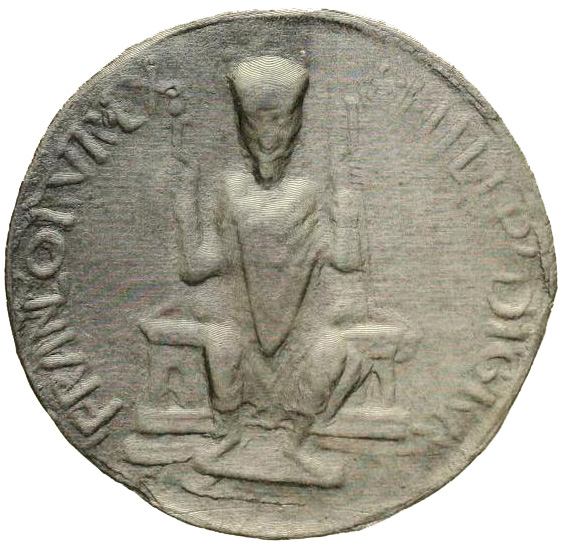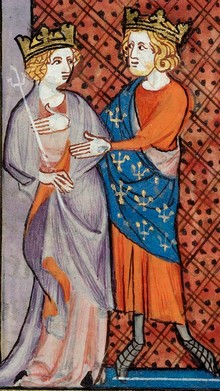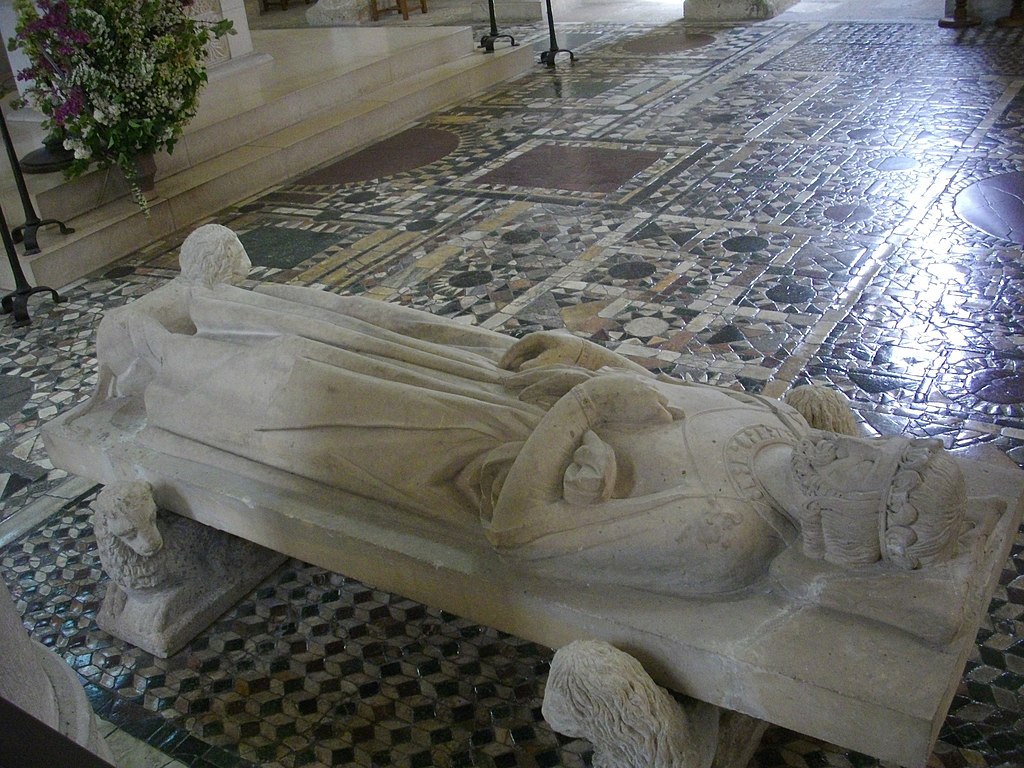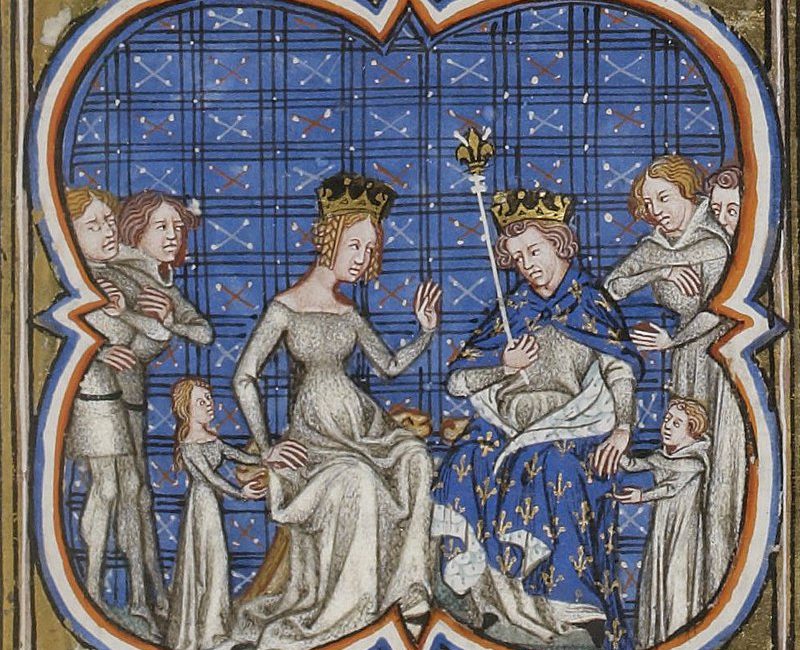
King Philippe I of the Franks, born on the 23rd of May 1052, died on the 29th of July 1108. He was the eldest son of King Henry I and his second wife, Anne of Kiev. At the time, the name ‘Philippe’, which Anne gave him, was unusual for Europe, but it would quickly become popular for future monarchs and in France. Philippe ascended to the throne at the age of 7, and until he turned 14, his mother, Anne, acted as regent with Baldwin V of Flanders being her co-regent.
Philippe was crowned at Reims on the 23rd of May 1059, several months before his father’s death, becoming a sole King of the Franks soon after this event. Back then, rulers of France didn’t call themselves Kings of France – his descendant, Philippe II Augustus, would be the first monarch to style himself as King of France. His mother, Anne of Kiev, was a daughter of Yaroslav the Wise, Grand Prince of Kiev and Prince of Novgorod, and his second wife, Ingegerd of Sweden. The capable and intelligent Anne was the first female regent of France for her son.
Philippe’s sole reign lasted for 48 years, which is extraordinarily long for the time. During his reign, he worked hard to strength the royal demesne (French: domaine royal), and the monarchy began its gradual recovery from the lows it reached during his father’s tumultuous reign. Over the course of time, Philippe managed to add the Vexin and Bourges to the royal demesne, and he also increased the income of the royal treasury. He dedicated a significant part of his life, just as his father’s had done, to dealing with and subduing his ambitious vassals. In 1077, Philippe made peace with William the Conqueror, who gave up attempting the conquest of Brittany.

He actively used a policy of devious alliances aimed at preventing the emergence of a new powerful rival in Normandy. Acting in this manner, Philippe at first supported Robert II Curthose, while before he had been allied with Robert’s brother, King William II of England, who had been killed by his foes by an arrow through the lung in the New Forest, probably near Brockenhurst. Both Robert II Curthose and William II of England were sons of the illustrious William the Conqueror, who both lost their power in England to their younger cunning and intelligent brother – King Henry I of England, whom later Philippe began supporting as well.
Philippe gained the nickname ‘Amorous’ largely because of his marital problems. His first wife was Bertha of Holland, daughter of Floris I, Count of Holland, and Gertrude of Saxony. Their union took place in 1072 and produced several children, including the necessary heir – the future King Louis VI the Fat or the Fighter. However, Philippe fell in love with a wife of his vassal – Bertrade de Montfort, the wife of Count Fulk IV of Anjou. Reciprocating his feelings, in 1092 Bertrade abandoned her husband to live with Philippe, who married her quietly, despite the fact that their spouses were alive.

Bertha was repudiated because, as Philippe said, she was too fat, so perhaps he just didn’t like her body after her several pregnancies, Humiliated by this repudiation, withdrew to the fortress of Montreuil-sur-Mer, which was part of her dower land. For his bigamist marriage to Bertrade, Philippe was excommunicated by Pope Urban II, but he promised to return to his first wife. Yet, Philippe continued living with Bertrade de Montfort, with whom he had three children – Philippe, Count of Mantes, Fleury, Seigneur of Nangis, and Cecile. Bertrade wanted one of her sons to succeed Philippe, and there were rumors that she tried to poison Prince Louis, son of Berthe, but it cannot be proved. Ironically, neither of her sons would not have a long life. Philippe’s excommunication was later several times lifted, but given his continuous bigamy, it was reinstated, and only after Bertha had passed away in 1094, it was finally lifted.
When knights began to gather for the First Crusade, Philippe didn’t participate due to his conflict with the Vatican. His younger brother, Count Hugh de Vermandois, answered the call to arms and is now known primary for his role in the first Christian expedition to the Holy Land. The Crusade attracted a number of Philippe’s vassals, in addition to his brother, and later it became beneficial for the French Crown because many of their vassals encountered financial troubles after their return home and desperately needed royal favor and monies.
Self-indulgent and lover of pleasures, Philippe I the Amorous gained a lot of weight in his fifties, although he had been handsome and fit in youth. Due to his obesity, he would probably have been unable to take part in any battle. Prince Louis, son of Bertha, practically took controlled of the kingdom in about 1100, but he was not crowned until his father’s death in 1108. Much more energetic despite his corpulence, Louis enthusiastically engaged in state affairs and effectively dealt with robber barons, his purpose being to strength the power of the crown. Soon Bertrade de Montfort took the veil at Fontevraud Abbey, where she died in 1117 at the age of 46-47.
According to Abbot Suger, Philippe I’s life and mental state later in life could be described like this:
“… King Philippe daily grew feebler. For after he had abducted the Countess of Anjou, he could achieve nothing worthy of the royal dignity; consumed by desire for the lady he had seized, he gave himself up entirely to the satisfaction of his passion. So he lost interest in the affairs of state and, relaxing too much, took no care for his body, well-made and handsome though it was. The only thing that maintained the strength of the state was the fear and love felt for his son and successor. When he was almost sixty, he ceased to be king, breathing his last breath at the castle of Melun-sur-Seine, in the presence of the [future king] Louis… They carried the body in a great procession to the noble monastery of St-Benoît-sur-Loire, where King Philip wished to be buried; there are those who say they heard from his own mouth that he deliberately chose not to be buried among his royal ancestors in the church of St. Denis because he had not treated that church as well as they had, and because among those of so many noble kings, his own tomb would not have counted for much.”

Philippe breathed his last at the castle of Melun-sur-Seine in the presence of Louis. His body was carried in a grand procession to the monastery of St-Benoît-sur-Loire, where the deceased man wished to be buried instead of being laid to eternal rest in the royal necropolis at the Basilica of Saint-Denis together with his ancestors. According to some contemporary sources, Philippe explained that there were so many nobles tombs in the basilica that his own tomb would have become meaningless among those of his noble forefathers. Philippe I is one of the few, if not the only one, French monarchs who was not buried at Saint-Denis.
All images are in the public domain.
Text © 2020 Olivia Longueville





